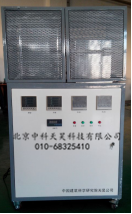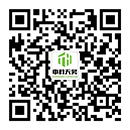Building energy-saving thermal series

The instrument was calibrated using NBS SRM 1450b fiberglass board, and several designs with thermal resistance greater than 0.2m·k/W were selected for comparison with the protective hot-plate device, with a deviation of less than ±3%. Therefore, the instrument is suitable for scientific research, design and production units.
1、Product introduction
Thermal conductivity (or thermal resistance) is one of the main thermal properties of thermal insulation materials, the measurement of thermal conductivity of building materials can be divided into two categories, steady state method and unsteady state method. The various forms of the two methods have their own characteristics and applicable conditions, different materials according to their own characteristics and use conditions, can choose different methods to determine. The method based on steady-state heat conduction principle has been very mature at home and abroad. At the end of 80's, China has developed a series of national standards with reference to international standards. Protective hot plate method and ball method thermal conductivity measurement instrument has also been put into production. However, rapid, simple, high accuracy, moderate price of heat flow meter thermal conductivity meter has not been officially produced, the company is specialized in the development and production of thermal testing instruments, especially the use of microcomputer technology for measuring instruments, has more than ten years of history. According to the international GB10295, the jw-iii building material heat flow meter with single sample and double heat flow meter heat conductivity meter developed adopts intelligent measurement. Therefore, the instrument is easy to use and the error caused by human is reduced.
The instrument was calibrated using NBS SRM 1450b fiberglass board, and several designs with thermal resistance greater than 0.2m·k/W were selected for comparison with the protective hot-plate device, with a deviation of less than ±3%. Therefore, the instrument is suitable for scientific research, design and production units.
2、standard of execution
GB/T10295-2008
3、Main technical parameters
Measurement range: sample thermal resistance >0.1m·k/W
Lambda value: 0.001 ~ 0.5
Hot surface temperature: room temperature ~60℃
Cold noodle temperature: room temperature ~5℃
Sample size: 300×300mm
Power supply voltage: AC220V2kW
Environmental conditions: temperature 5~40℃, relative humidity <90%
Measurement error: ≤±5%





